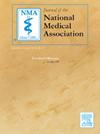印度部落镰状细胞病患者的初级保健利用模式:一项多中心研究
IF 2.5
4区 医学
Q1 MEDICINE, GENERAL & INTERNAL
引用次数: 0
摘要
背景:近年来,慢性病的预防和管理已被纳入初级卫生保健系统。然而,由于社会、文化和地理障碍,镰状细胞病(SCD)这类慢性疾病之一的患者利用和获得医疗保健服务的机会很少。因此,本研究探讨了印度五个SCD流行部落地区SCD患者门诊服务的利用情况及其相关因素。方法:对5个SCD流行区263例SCD患者或其护理人员及相应对照263例进行横断面定量研究。利用门诊服务和卫生系统相关特征的数据收集使用预测试问卷。采用多元logistic回归探讨门诊使用率与自变量之间的关系。结果:约80%的患者报告公共卫生系统是医疗保健的常规来源。在过去一年中,86%的患者和65%的对照者或其家属访问了初级保健中心(PHCs)。超过三分之二的患者(67.7%)和超过一半的对照组(50.6%)在获得初级保健服务时没有遇到任何问题。6-10年受教育程度(调整优势比(AOR)=0.45)、家庭年收入在480 - 720美元(AOR=0.41)和720美元以上(AOR=0.35)、距离初级保健医院不到15公里(AOR=0.32)的患者较少去初级保健医院就诊。结论:初级卫生保健系统是大多数人口的常规医疗服务来源,在我们的研究中,初级卫生保健中心门诊服务的利用率很高。因此,本研究强调从初级卫生保健层面加强对SCD的筛查和管理,以满足SCD患者的连续护理需求。本文章由计算机程序翻译,如有差异,请以英文原文为准。
Primary healthcare utilization patterns among sickle cell disease patients in tribal India: A multi-centric study
Background
Prevention and management of chronic diseases have been integrated into the primary healthcare system in recent years. However, due to the social, cultural and geographical barriers, patients of one of such chronic illnesses, viz., sickle cell disease (SCD) have poor utilization and access to healthcare services. Hence, this study explored the utilization of outpatient services by SCD patients and associated factors in five SCD-endemic tribal districts of India.
Methods
This cross-sectional quantitative study was conducted on 263 SCD patients or their caregivers and 263 corresponding controls recruited from 5 SCD endemic districts. Data on utilizing outpatient services and health system-related characteristics were collected using a pretested questionnaire. Multiple logistic regression was conducted to explore the association between utilization of outpatient services and independent variables.
Results
About 80% of the patients reported the public healthcare system as a regular source of healthcare. 86% of the patients and 65% of the controls or their families visited primary health centres (PHCs) in the past year. More than two-thirds of the patients (67.7%) and more than half of the controls (50.6%) didn’t face any problems accessing PHC services. Patients with 6–10 years of schooling (adjusted odds ratio (AOR)=0.45), annual family income of USD 480 to USD 720 (AOR=0.41) and more than USD 720 (AOR=0.35), >15 kilometres of distance to PHCs (AOR=0.32) are less likely to visit PHCs.
Conclusion
The primary healthcare system was a regular source of medical care for the majority of the population, and utilization of outpatient services at PHCs was high in our study. Hence, this study emphasizes strengthening screening and management of SCD right from the primary healthcare level so that the healthcare needs of SCD patients can be met for the continuum of care.
求助全文
通过发布文献求助,成功后即可免费获取论文全文。
去求助
来源期刊
CiteScore
4.80
自引率
3.00%
发文量
139
审稿时长
98 days
期刊介绍:
Journal of the National Medical Association, the official journal of the National Medical Association, is a peer-reviewed publication whose purpose is to address medical care disparities of persons of African descent.
The Journal of the National Medical Association is focused on specialized clinical research activities related to the health problems of African Americans and other minority groups. Special emphasis is placed on the application of medical science to improve the healthcare of underserved populations both in the United States and abroad. The Journal has the following objectives: (1) to expand the base of original peer-reviewed literature and the quality of that research on the topic of minority health; (2) to provide greater dissemination of this research; (3) to offer appropriate and timely recognition of the significant contributions of physicians who serve these populations; and (4) to promote engagement by member and non-member physicians in the overall goals and objectives of the National Medical Association.

 求助内容:
求助内容: 应助结果提醒方式:
应助结果提醒方式:


